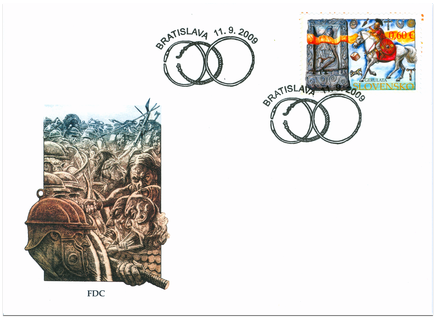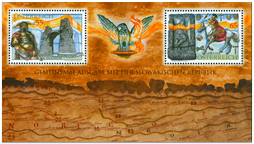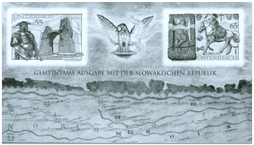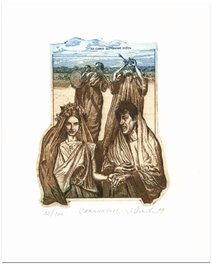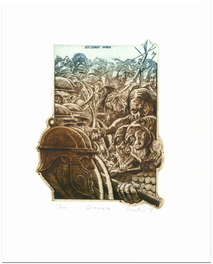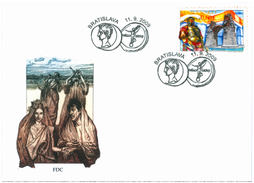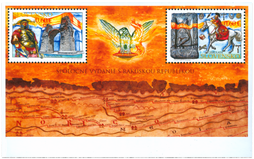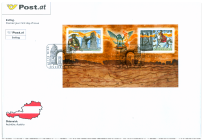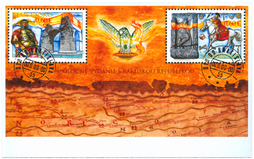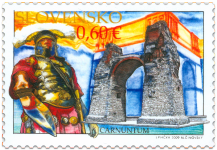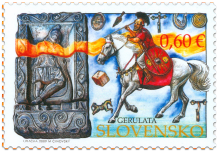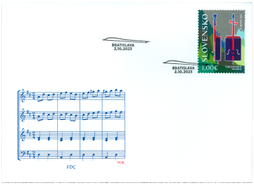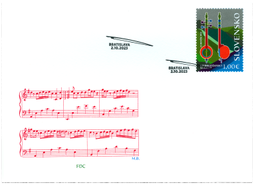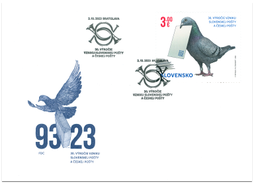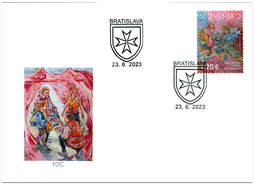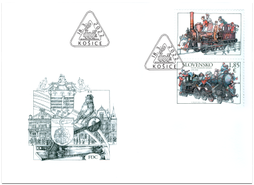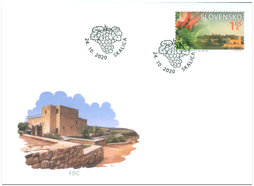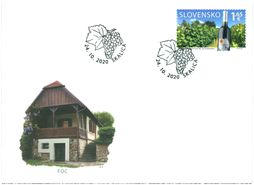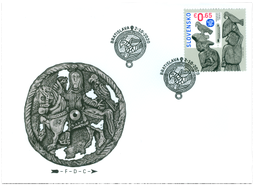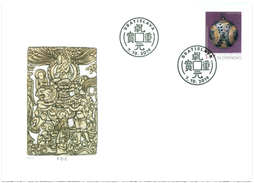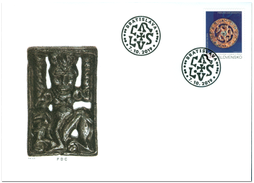On stock 7 pcs
This product is part of the following products
FDC 460 Date of issue
11.09.2009 Face value
0.60 € Sell price
1.20 €
During the Roman period, the Limes romanus was a system of military strongholds along the Danube which protected Roman provinces against attacks of German tribes. Initially wooden camps for Roman troops, they were reconstructed during the reign of the Flavians to become wooden camps for the legions – castrum legionis and of their auxiliary corps – castellum. The most significant Roman stronghold in the Pannonia province was Carnuntum, situated next to the present-day village of Petronell in Austria. This Roman camp was built there by Tiberius during the war with the Marcomannis in 6 A.D. The camp was later re-built into a stone fortification of the castrum type, and became the seat of the XIV legion Gemina. Early in the 2nd century, the emperor Trajan promoted the camp into a town – municipium, which was a military and commercial centre on the Amber Road, as well as the capital of the Pannonia province. The best known Roman monument in Carnuntum is the "Heidentor" – the "Heathen Gate" built outside the town in 4 A.D. by Roman emperor Constantinus II. (337–361). Originally this gate consisted of four cross-vaulted pillars (tetrapylons), with huge columns overshadowing the emperor's statue beneath the vault. The nearest Roman camp to the east from Carnuntum was Gerulata, in Rusovce, a part of Bratislava. This fortified castel was built in the second half of 1 A.D. under the Flavians, it became the seat of a unit of German riders Ala I milliaria Cannanefatium. In 4 A.D. the castel was re-built into a minor stone stronghold with a huge square-shaped fortification. In the fortification’s foundation, numerous tombstones of older Roman graveyards had been used, such as the tombstone with the motive of Attis, the son of the river-god Sangarius. According to Roman mythology, after his tragic death the goddess Cybele had him re-born as the ever-green pine. Thus Attis became the symbol of immortality and eternal life. The name of the stronghold Gerulata is known from a medieval copy of a Roman map of 4 A.D. - the Tabula Peutingeriana. The map shows roads in the territory of the Roman Empire from Spain to India. In the 18th century, it was bought by the Austrian prince, Eugene of Savoy, who gifted it to the imperial court library in Vienna (now the Österreichische Nationalbibliothek). The map is included in the UNESCO List of World Heritage. Martin Vančo
Show less© 2024 POFIS - Postal philatelic service. All rights reserved

